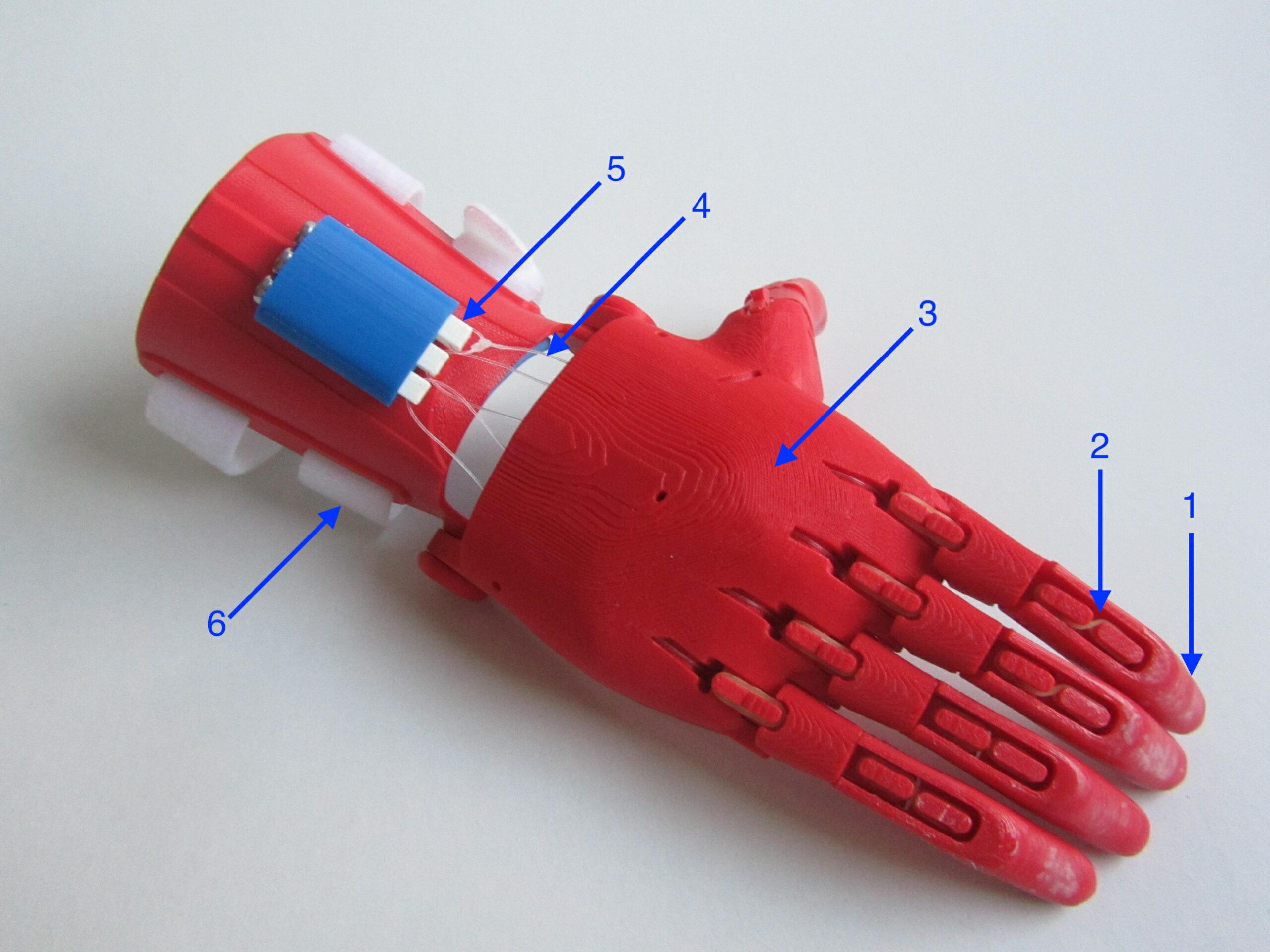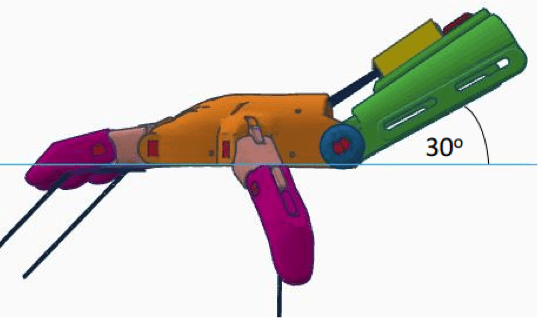The purpose of carrying out the test hand in order to be validated is to give you the experience not only of printing but also of assembly, and to fully understand the elements of comfort and safety, all this without the stress of a recipient pawing behind your shoulder.
The test hand must be carried out entirely, with the same care and the same materials as if it were intended to be worn, with the exception of the PlastiDip which is not mandatory.
Check carefully in the tips below that you haven’t fallen for the most common traps, then go to this page to submit your hand for validation.
- Not compulsory for the test hand, get Plastidip to give grip to the fingertips and in the palm.
- The dental elastics must be crossed at the level of the terminal phalanges.
- Print quality should be good, (35% infill, 3 perimeters), with no holes.
- Except for the thumb, the tendons are not knotted but must slide freely in the eyes of the tensioner pins. The thread is single strand nylon thread, non-elastic, non-woven, with a diameter of 0.4mm to 0.6mm depending on the size of the hand.
- The tensioner must be fully seated on the gauntlet, the tensioner pins must be screwed only halfway when placing the tendons, to allow you to fine-tune the tension in one direction or the other. Eyes should be horizontal.
- The scratch and foam are mandatory for the test hand. The scratch must be placed in such a way that it can be tightened with one hand. See the post on scratching in the “Assemble” section. The foam goes on the gauntlet and on the arch of the palm.
Note: for the hands and arms that you will do next, e-Nable France will provide you free of charge, as soon as you know the colors, the foam and the scratch. - Bonus gift: Hand at rest, palm flat, the gauntlet must form an angle of 30 ° with the horizontal.


